Custom jacquard webbing manufacturing requires precise material selection to achieve optimal performance across diverse applications. Through decades of engineering tailor-made webbing solutions, we’ve seen how the right material choice directly impacts product durability, aesthetic appeal, and compliance requirements. Our custom manufacturing expertise helps product developers navigate complex material decisions and optimize designs for superior performance outcomes.
Custom jacquard webbing materials include polyester, nylon, cotton blends, RPET, and bio-based options. Choose polyester for versatile strength applications, nylon for high-abrasion resistance, cotton blends for premium aesthetics, RPET for sustainability, and bio-based materials for eco-conscious projects.
Continue reading to discover how each factor impacts your jacquard webbing selection and get expert insights to help you make the optimal choice for your specific needs.
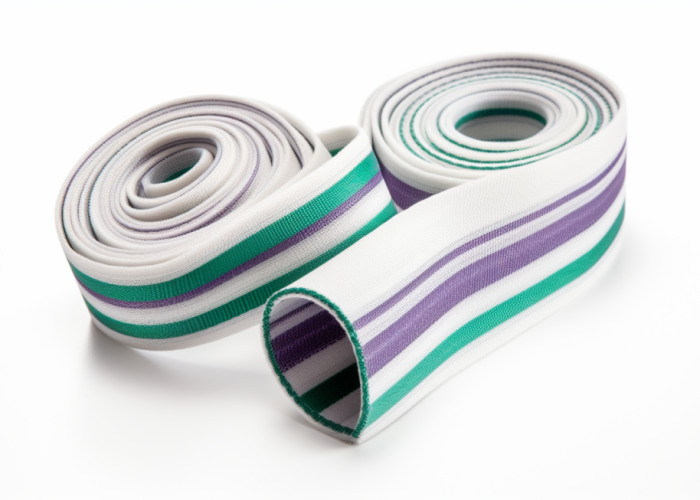

Webbing manufacturing expert with 15+ years of experience helping product developers build high-performance straps for industrial, medical, and outdoor use.
Choose custom jacquard webbing material by first defining load, environmental, and visual requirements—then match them to the right fiber (e.g., nylon for strength, polyester for UV resistance). Ensure selections meet regulatory standards like REACH or OEKO-TEX to guarantee compliance and durability.
Performance Insights:
Common Selection Oversights:
From our custom manufacturing experience, outdoor gear designers often default to cotton for aesthetics but face performance failures in humid conditions. Industrial clients consistently choose polyester or nylon for dimensional stability and predictable load distribution under ASTM testing protocols.
Design Takeaway: Use a weighted selection matrix—Performance (40%) / Compliance (30%) / Aesthetics (20%) / Sustainability (10%)—to guide material choice. Request early-stage performance testing (UV, tensile, abrasion) to validate assumptions before committing to volume production.
natural comfort of cotton with the enhanced strength and durability of polyester. Typically featuring a mix of approximately 65% polyester and 35% cotton, these blends offer improved strength, reduced shrinkage, and better wrinkle resistance compared to pure cotton, while maintaining a softer feel than 100% synthetic materials. Poly-cotton blends are ideal for belts, bag straps, and accessories worn for extended periods where both comfort against the skin and reasonable durability are priorities.
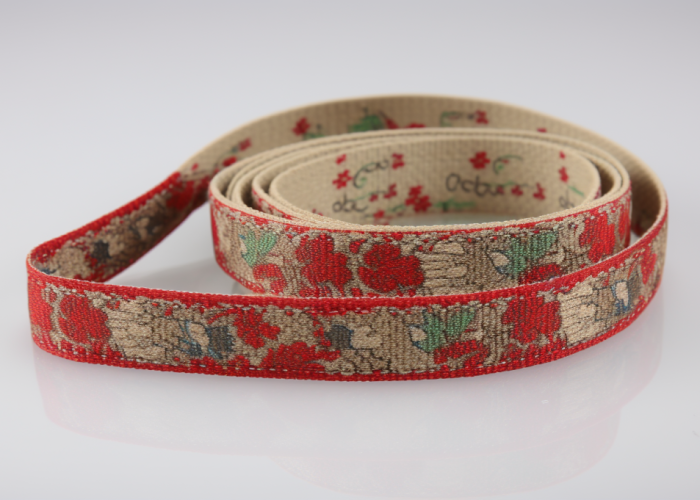
Key performance specs for jacquard webbing include tensile strength (2,500–6,000 lbs), elongation at break (15–25%), UV resistance (1,000+ hrs), low moisture absorption (<5%), and abrasion resistance (5,000+ cycles). These factors directly influence product safety, dimensional stability, and long-term performance.
Core Performance Metrics:
Application Insights:
Industrial use often requires >3,000 lbs strength and low stretch. Outdoor gear demands UV resistance above 500 hrs and <3% moisture absorption to avoid warping. Fashion applications prioritize color fastness (Grade 4–5) and texture.
According to our lab testing under ASTM G155, untreated cotton loses up to 40% of strength after just 200 hours of UV exposure. By contrast, solution-dyed polyester retains >90% strength after 1,000 hours.
Design Takeaway: Define minimum specs early—tensile strength 2× working load, UV resistance matching exposure period, <5% moisture absorption for stability. Always request test certificates and batch-level performance data for critical-use applications.
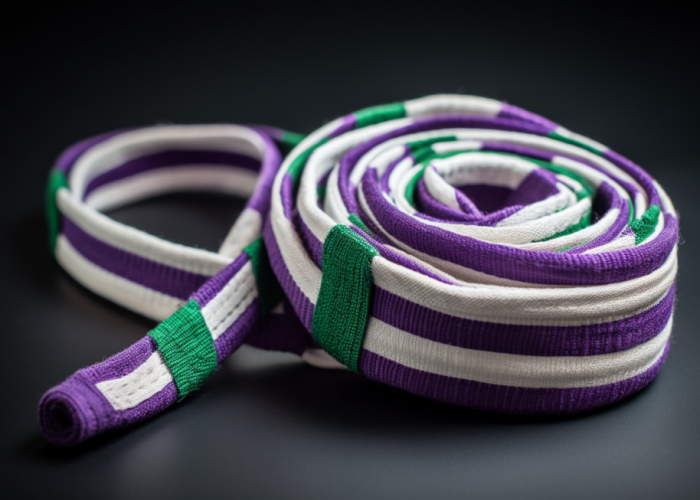
Polyester is preferred for most jacquard webbing due to UV and chemical resistance, while nylon is ideal for high-abrasion and high-strength needs. Your choice depends on application priorities.
Performance Comparison:
In ASTM D5034 tests, nylon shows 25–30% higher tensile strength, but polyester retains strength longer outdoors. In marine trials, polyester maintains 85%+ integrity after 2 years, while nylon requires UV treatment to match.
We find ~70% of jacquard orders use polyester due to its reliability and cost-efficiency. Nylon is reserved for safety-critical or industrial gear—climbing, military, or tactical uses.
Design Takeaway: Use polyester for outdoor, marine, or chemically exposed items. Use nylon when maximum abrasion and strength are essential. For indoor fashion, both work—base your choice on feel, price, and brand aesthetic.
Use cotton jacquard webbing for fashion, luxury, and skin-contact applications where softness, aesthetics, and natural texture are more important than outdoor durability.
Best-Fit Applications:
Known Limitations:
From our custom production insights, fashion brands favor cotton for its visual richness and dye performance, but outdoor gear designers reject it due to humidity and UV vulnerabilities.
Treatment Options:
Design Takeaway: Use cotton only for indoor or display applications. For added durability, blend with polyester (60/40 or 70/30) to preserve aesthetics while improving moisture and UV resistance.
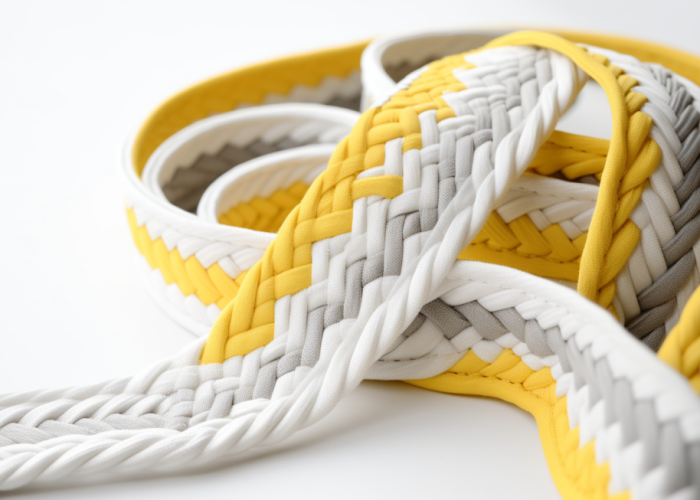
Jacquard webbing performance is defined by five key metrics: tensile strength, UV resistance, elongation, moisture absorption, and abrasion durability. These directly affect long-term reliability and suitability for load-bearing, outdoor, or wearable use cases.
Performance Benchmarks:
Application Examples:
Design Insight:
Set performance thresholds before material selection. For industrial applications, tensile strength should be at least 2x the expected load, and UV/moisture resistance should match environmental exposure.
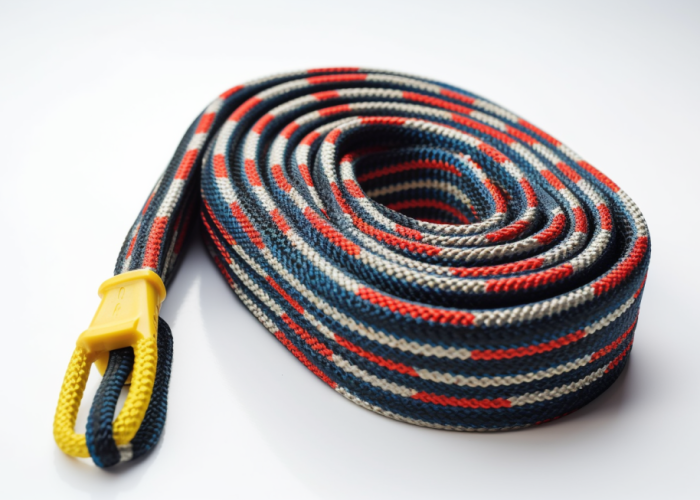
Polyester offers the best all-around performance for outdoor use, RPET adds sustainability with slightly reduced strength, and nylon is ideal for high-abrasion, high-strength needs.
Material Strength UV Resistance Abrasion Moisture Resistance Use Case
Polyester 2,500–4,500 lbs Excellent (>1,000 hrs) Good <2% Outdoor, marine, general
Nylon 4,000–6,000 lbs Fair (needs treatment) Excellent ~3% Climbing, lifting, military
RPET 2,250–4,000 lbs Comparable to polyester Good ~3% Sustainable, indoor/outdoor
Design Insight:
Use polyester by default unless abrasion or extreme strength is a priority. Select nylon for safety gear and RPET when sustainability goals take precedence.
Cotton and bio-based webbing are best for fashion, packaging, and light-duty indoor use where aesthetics, comfort, or sustainability matter more than maximum durability.
Property Cotton Bio-Based Alternatives
Tensile Strength 1,500–2,500 lbs 1,800–3,500 lbs
UV Resistance <200 hrs 200–400 hrs
Moisture Absorption 8–25% 3–8%
Biodegradability Low High (6–24 months)
Use Cases:
Design Insight:
Specify cotton or bio-based only for indoor, short-service-life items. For outdoor durability, use blends or apply water/UV treatments.
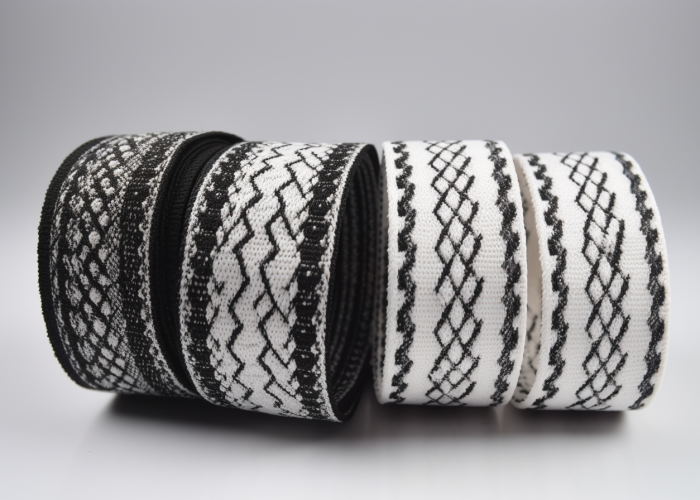
Jacquard webbing should meet load specifications 2–4x above expected working load. Use safety factors to adjust for environmental stress, dynamic loads, and application risk.
Minimum Tensile Guidelines:
Safety Factors:
Environmental Derating:
Design Insight:
Calculate: (Working Load × Safety Factor) ÷ Derating Factor. For 500 lb load, 4:1 factor, outdoor use: Minimum 2,500 lbs tensile.
Jacquard webbing must meet REACH and OEKO-TEX for textile safety. RPET and bio-based options should include GRS certification to validate sustainability claims.
Compliance Checklist:
Design Insight:
Request material-level certificates and test reports early. For exports to Europe or US, list compliance needs in the PO to avoid delays or shipment rejection.
Summary Takeaway Table
Design Need Recommended Material Minimum Specs Compliance
Outdoor/Marine Polyester UV >1,000 hrs, TS >3,000 lbs REACH, OEKO-TEX
Climbing/Safety Nylon TS >6,000 lbs, Abrasion >5k cycles REACH
Fashion/Luxury Indoor Cotton / Bio-Based Aesthetic priority, UV <300 hrs OEKO-TEX, GRS (bio)
Eco-Conscious Products RPET TS >2,500 lbs, UV >1,000 hrs GRS, REACH, OEKO-TEX
Expert Tip: Always match material to application by calculating combined tensile, UV, and moisture demands. Then validate supplier data with test reports and global compliance documentation.
Custom jacquard webbing material selection requires balancing performance requirements, environmental conditions, and compliance standards to achieve optimal product outcomes. Polyester offers the best versatility for most applications, while specialized materials like nylon, RPET, and bio-based options serve specific performance or sustainability needs. Contact us to explore manufacturing solutions tailored to your jacquard webbing requirements.
Minimum orders typically start at 1,000 yards for custom jacquard patterns, though this varies by complexity and material type. Standard materials may have lower minimums of 500 yards. Contact us for specific quantity requirements based on your design specifications.
Yes, we provide color matching services using Pantone references or physical samples. Standard colors ship immediately, while custom color matching adds 5-7 days to production time. Digital color proofs available before production to ensure accuracy.
Production timeline ranges from 2-4 weeks depending on pattern complexity and material selection. Simple designs on standard materials ship in 2 weeks, while complex multi-color jacquards or specialty materials require 3-4 weeks. Rush orders available with expedited scheduling.
Yes, we provide free samples of existing patterns and materials. Custom pattern samples available for $100-600 depending on complexity, with costs credited toward production orders. Sample turnaround is typically 5-7 business days.
We accept Adobe Illustrator (.ai), vector PDF, PNG, and JPEG files at 300 DPI minimum resolution. Vector formats preferred for crisp pattern reproduction. Our design team can also digitize hand-drawn patterns or provide pattern development services.
We provide REACH compliance documentation, OEKO-TEX Standard 100 certification, tensile strength testing per ASTM D5034, UV resistance testing, and colorfastness reports. Additional testing available including flammability, abrasion resistance, and dimensional stability as required.